
views
Formatting Your Letter
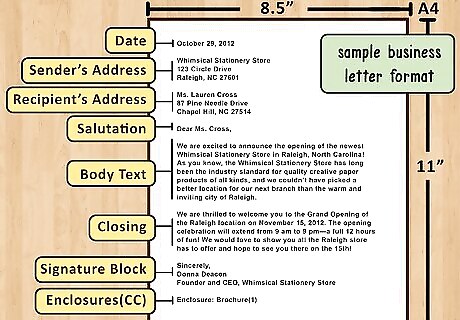
Use traditional business format. For a formal letter such as an appeal letter, traditional business format is your only option. You typically can find a business letter template on any word processing application. If you have letterhead, you may want to use it for a more professional touch.
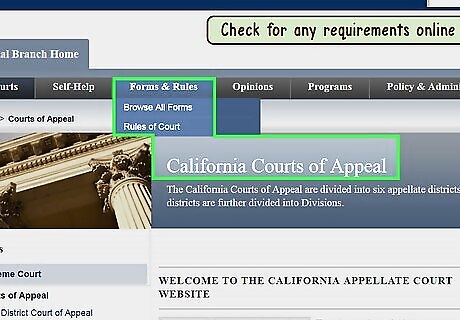
Check for any requirements. Whoever you're writing to request an appeal may have specific information they require on all appeals. They also may have a specific form you must use. Find these out before you write your letter so you don't have to go back and make changes later. You may be able to find this information online or you may have to call somebody in the office. Typically it's better for you if you can get the information in writing, so you can make sure you're including everything.
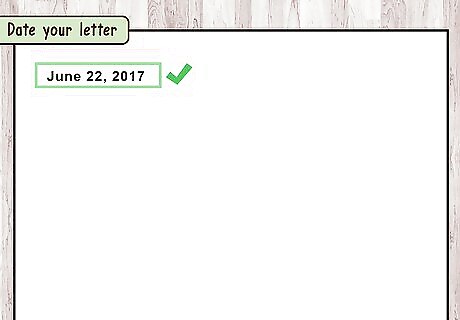
Date your letter. On a business letter, the date usually is somewhere at the top of the letter. This date should be the date you wrote the letter. Your word processing application may automatically enter the day's date.

Use the proper salutation. Do your best to address your letter to a specific person. If you can't get a specific name, at least use a specific job title. As a last resort, address your letter "To Whom It May Concern." "Dear Dr. Drew" is an appropriate salutation. Include the individual's title if it is important or relevant to your appeal. For example, if you're writing to the Dean to request an appeal from a suspension, "Dear Dean Drew" would be appropriate.
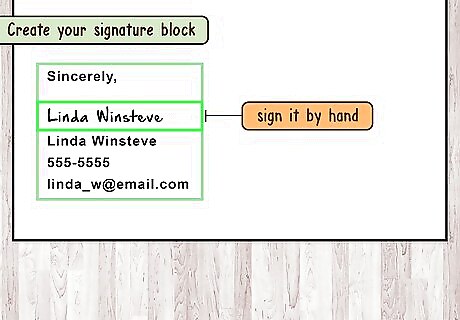
Create your signature block. After you've finished typing your letter, you'll print it up and sign it by hand. Leave at least four lines for your signature, and then type your name below the space. You may want to include preferred contact information under your name, such as your phone number or email address.

Make notations for attachments. You likely will have documents or other information to back up the statements you make in your appeal letter. Use traditional business formatting to list these attachments on the letter itself, so your recipient can confirm they got everything.
Crafting Your Appeal
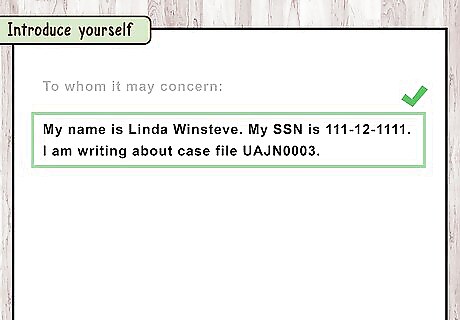
Introduce yourself. Start your appeal letter by taking one sentence – two at most – to tell the person reading the letter who you are and your relation to the situation at hand. Keep it brief, and don't include any information that isn't relevant to the appeal. For example, if you are a student appealing an academic suspension, your first sentence might read: "My name is Katie Parker. I am a junior here at State Tech who has been on the Dean's list three out of my most recent five semesters." If you are writing the appeal letter on behalf of someone else, include information about them as well in the first sentence or two.
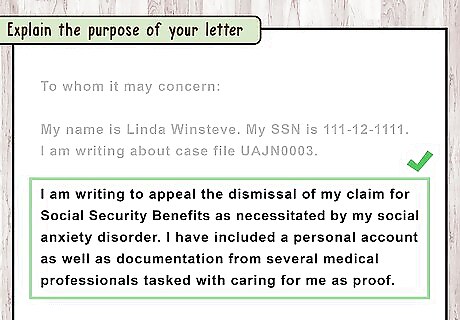
Explain the purpose of your letter. The opening paragraph of your letter essentially is a summary of your appeal. It's a good idea either to outline your letter first, or to write your appeal and then come back to this summary. Use the opening paragraph to briefly describe the decision that you want to appeal and the incident that led up to it. Close your opening paragraph with a sentence that tells the reader exactly what you want to happen. To continue the previous example, the rest of Katie's opening paragraph might read: "Last semester I was placed on academic suspension, despite the fact that my overall GPA was a B. Since this violates school policy, the suspension should be removed from my record."
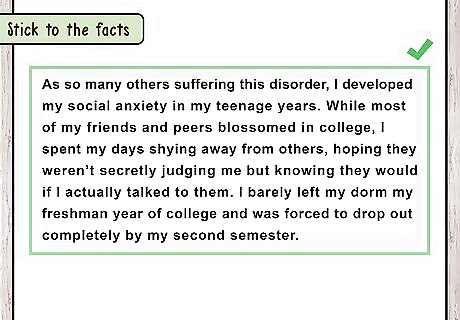
Stick to the facts. After your opening paragraph, start a new paragraph and tell your reader exactly what happened that led up to the decision you want to appeal. Provide as many specific details as you can. Make a note of facts you list that you can back up with documentation. The more evidence you have to support your case, the more likely your appeal will be granted. Keep emotion and appeals to sympathy. Avoid passive voice, which can make it look like you're trying to evade responsibility for your actions.
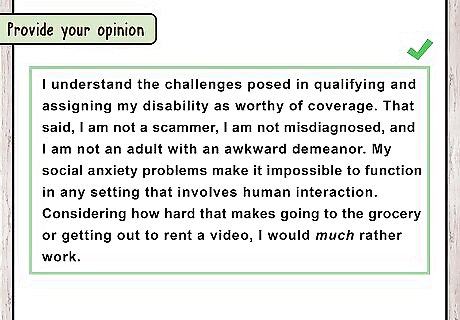
Provide your opinion. Once you've told the story, start a new paragraph to explain to your reader how the decision you described was wrong. Provide copies of rules or policies that back up your interpretation of the situation. If you made mistakes or violated rules yourself, acknowledge them. Describe the surrounding circumstances if they're relevant, but don't make excuses. Own up to your actions. If relevant, describe how you've grown or changed as a result of the entire incident. Particularly in an academic setting, you can prove yourself worthy of a second chance if you demonstrate sincere personal growth.

State clearly what you want to happen. In the final paragraph of your appeal letter, tell the reader your desired outcome. Keep it as simple and straightforward as possible. Avoid making outlandish threats, or any promises you don't intend to follow through on. For example, you may have the opportunity to file a lawsuit if your appeal isn't resolved to your satisfaction. But unless you've already talked to a lawyer and plan to file a lawsuit, leave a threat of legal action out of your appeal letter.
Submitting Your Appeal Letter

Gather documentation. Any appeal has a greater chance of success if all the facts are thoroughly documented. The type of documentation you'll need depends on what kind of decision you're appealing. Go through your letter with a highlighter and highlight all facts – dates, places, names. Then ask yourself if you have any proof of that fact. If you do, include it. You'll also want to include identification documentation, as well as anything that connects you to the recipient, such as a membership card or a student ID. Make copies of these rather than sending your originals.
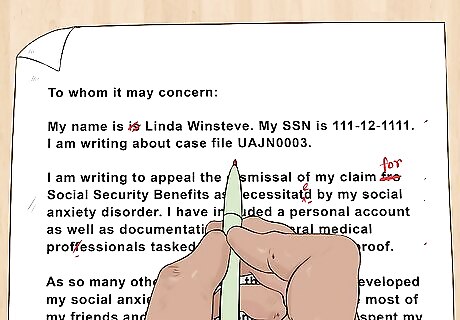
Proofread your letter thoroughly. You run the risk that your appeal will not be taken seriously if your letter is riddled with typos and grammatical errors. Read your letter aloud to pick up on additional errors or awkward phrasing. Go back and check the date on the letter, especially if you've been drafting it over the course of several days. That date doesn't necessarily have to be the date you mail it, but it should reflect the date you signed the letter. You also want to check your notations for attachments and make sure everything you've included is listed.

Make copies of the entire package. After you've signed your letter, make a copy of it along with a copy of every attachment. You'll want to keep these for your own records, at least until the issue is resolved. You may want to make a separate folder just for this incident. Keep all documents and information related to your appeal until the matter is concluded.
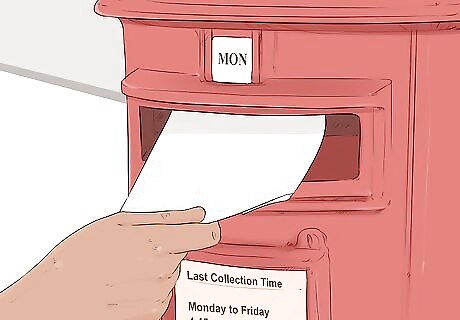
Mail your letter. You want to mail your letter rather than taking it in person so you have proof of receipt. Use certified mail that will require a signature and send you a receipt. Even if you never end up filing a lawsuit, the date your appeal was received may end up being important. For example, suppose you get a notice saying your appeal wasn't received within 20 days of the decision. If you have a certified mail receipt that shows the letter was received 10 days after the decision, you can have your appeal heard.

Follow up on your letter. Once you mail your letter, mark a date on your calendar within about a week to contact the recipient if you haven't heard from them yet. Since you're the one requesting a second chance, be an active participant in the process and show that it means something to you. Following up doesn't mean being a pest. Call once and find out if they've received the letter. Ask what their timeline is or when you should expect to hear back, and plan accordingly. If they request more information or other documentation, submit what they need as quickly as possible.



















Comments
0 comment